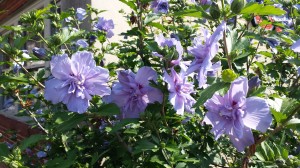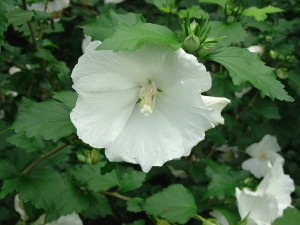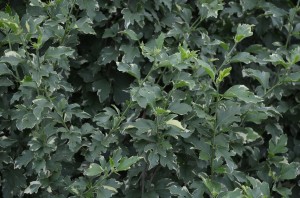In several states rose of Sharon or altheas (Hibiscus syriacus) are classified as exotic (non-native) invasive shrubs (USDA hardiness zones 5-8). Their seedlings are invading U.S. woodlands. Plant breeders are now developing less invasive cultivars.
The double-flowered altheas produce far fewer fertile seeds; stamens and pollen sacs are mostly embedded within the flower petals. Azurri Blue Satin® is a new seedless form with celestial blue blooms. Sugar Tip® althea is covered with light pink and white double frilly petal blooms; Sugar Tip’s variegated foliage is green with creamy white edges. Both cultivars grow 8-12 feet tall and 4-6 feet wide.
Most double-flowered altheas produce some fertile flowers and are much preferred over open single invasive forms. Among the best are Blue Bird (dark blue double), Blushing Bride (multi-pink shades double), Freedom (purplish-pink), and four cultivars in the Chiffon series (Blue, Lavender, Pink and White).
Over a quarter century ago, the U.S. National Arboretum released four tetraploid cultivars, called the Roman Goddess series. Diana (white), Aphrodite (rose), Helene (white/purple), and Minerva (lavender) are seedless forms.
Altheas grow best in full sun and in average, well-drained, pH neutral soil. Altheas are utilized as single specimen shrubs, or grouped together for hedging, privacy screening or border plantings. They attract butterflies and hummingbirds, plus deer generally leave altheas alone. Prune as needed to size and shape from late fall thru winter. Altheas bloom on current season growth. Apply a slow release fertilizer such as Osmocote™ and Nutrikote™ in early spring as new growth begins to emerge.




 Posted in
Posted in 
